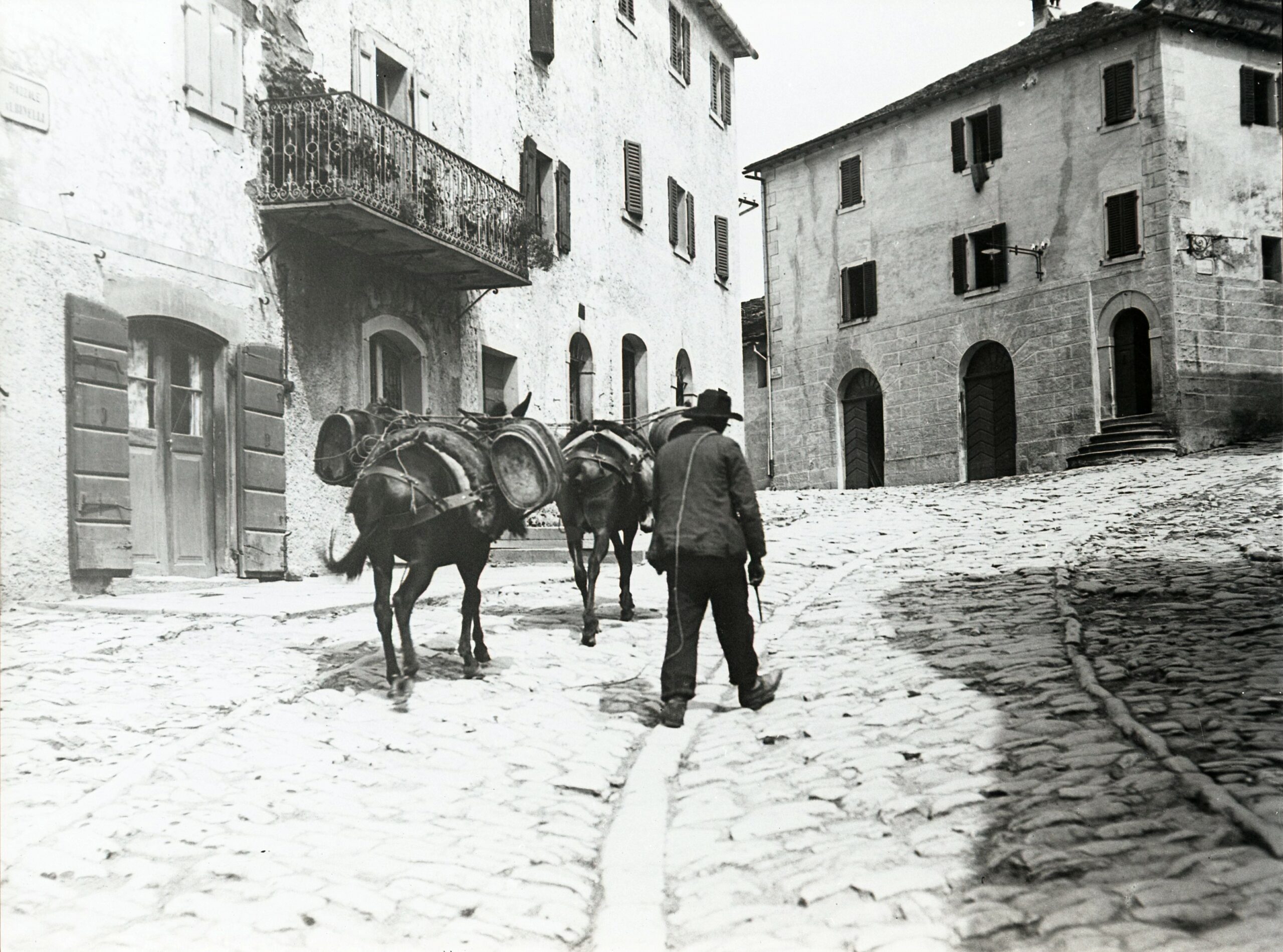ENGLISH BELOW

La piazza Albinelli era l’antica piazza del paese, sulla quale si affacciavano alcune delle abitazioni delle famiglie più facoltose e altri edifici istituzionali: la casa-torre degli Albinelli, parzialmente mozzata nella parte superiore, casa Pini, casa Cassai, casa Passerini, la vecchia podesteria (oggi Hotel Elena) con a lato la vecchia caserma dei militari.

Nel punto in cui è stato eretto l’attuale campanile vi era, già nel 1589, un piccolo oratorio dedicato ai Santi Rocco e Sebastiano, protettori dalla peste, che verrà demolito nel 1813.
Imboccando un vicolo laterale alla piazza si può notare, sopra alla porta di quello che un tempo era un forno, l’Impresa del diamante del Duca d’Este, scolpita nell’arenaria. Chiaramente questa non era la posizione originaria della scultura in qualche modo sottratta da qualche sito della fortezza. Quest’ultima infatti, per molti decenni, ha funzionato da cava di pietre squadrate per la costruzione di abitazioni in paese.

Nel fabbricato su cui è posta questa targa ha vissuto il geom. Cesare Magnani, sindaco di Sestola dal 1958 al 1975, che si adoperò in prima persona per la trasformazione e il rilancio turistico del paese. Fu con lui infatti che Sestola seppe investire nell’impiantistica per gli sport invernali e in altre importanti infrastrutture turistico-sportive, tali da renderla la “Perla dell’Appennino”.
Sempre in questa piazza nasceva nel 1877 la soprano Teresina Burchi, una delle figure più rappresentative del Melodramma dei primi trent’anni del Novecento. La cantante soggiornava a Sestola soprattutto nei periodi estivi, deliziando con le sue romanze i “signori” delle ville del paese.

ALBINELLI SQUARE
Albinelli Square was the ancient village square, overlooked by some of the houses of the wealthiest families and other institutional buildings, such as Albinelli tower-house, partially cut off in the upper part, Pini house, Cassai house, Passerini house and the old Podestà office (today Hotel Elena), flanked by the old military barracks.
Before the present bell tower was built here, in 1589 there was already a small oratory. It was dedicated to Saint Rocco and Saint Sebastiano, protectors from the plague, and it was demolished in 1813.
Taking a side alley to the square, you can see the symbol of the diamond (Impresa del Diamante), emblem of the Duke of Este, carved in the sandstone above the door of what was once a bakery. Clearly this was not the original location of the sculpture, which was somehow stolen from the fortress area. The latter served for many decades as a quarry for squared stones to build houses in the village.
In the building on which this plaque is placed lived the surveyor Cesare Magnani, mayor of Sestola from 1958 to 1975, who worked personally for the transformation and tourist revival of the town. In fact, it was thank to him that Sestola was able to invest in winter sports facilities and other important tourist-sports infrastructures, such as to make this village the “pearl of the Apennines.”
In 1877 the soprano Teresina Burchi, one of the main representatives of melodrama in the first thirty years of the twentieth century, was also born in this square. The singer used to stay in Sestola especially during the summer, delighting the “lords” of the villas with her lyrics.




